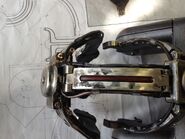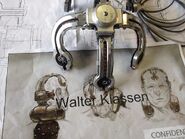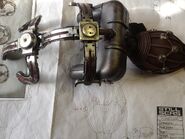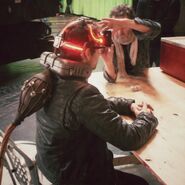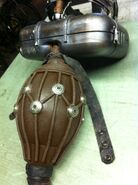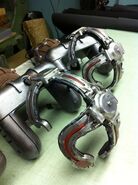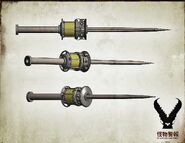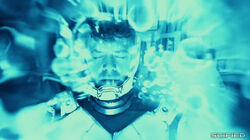
Yancy Becket in the process of Drifting with his brother Raleigh.
- "Two pilots engaged in neural bridge..."
- —Gipsy Danger A.I.[1]
The Drift (also known as Drifting or Bridged[2]) is a mental process that two Jaeger pilots undergo before synchronizing with the Jaeger itself.
History[]
The initial concept of Drifting was conceived when Dr. Caitlin Lightcap, the creator of the Pons System, realized that the neural load and mental strength required to control the Jaegers was too much for a single person to handle.[3] After the death of Adam Casey, the first test pilot for the prototype Jaeger Brawler Yukon, Lightcap and her colleague, Dr. Jasper Schoenfeld, both become concerned that a second failure would end the Jaeger Program before it even had a chance to properly begin.[2].
The attempt to allow the next potential Jaeger pilot, Sergio D'onofrio, to control the Brawler Yukon on his own during the Jaeger's second test run almost ended in his death when he suddenly got hit with a seizure.[2] Finally realizing that the neural load was too much for a single pilot to withstand, Lightcap used a spare Pons headset to mentally connect with Sergio, creating the first Drift and saving his life. Her actions later earned the approval of the Pan Pacific Defense Corps and sanctioned the production of the Mark-1 Jaegers.[2]
Drifting Process[]
The process of Drifting is a type of Mind Meld[4] that requires the pilots to share their memories, instinct and emotions with each other. Drifting allows them to act as one consciousness and control the very movement of the Jaeger itself, with one pilot controlling the "right hemisphere" and the other the "left hemisphere". Rangers who pilot on the right side of the Jaeger are considered the dominant pilot.[5][note 1]
While Drifting, pilots will lapse into silence and attempt to keep their mind clear of all thoughts.[3] Random Access Brain Impulse Triggers (or R.A.B.I.T.) are an occurrence where one pilot latches onto a memory, a behavior that it discouraged while piloting a Jaeger. The emotions from this memory typically translate into actions for the Jaeger, depending on the hemisphere the pilot is calibrated to. A pilot can become trapped in a memory they latch onto regardless of who the memory belongs to[6] and as a result, first-time pilots and pilots in general are advised never to "chase the rabbit".[7]
Whether two pilots are "Drift Compatible" with one another depends largely on their personal connection and their ability to work in sync with each other. Compatibility is commonly determined through sparring in areas like the Kwoon Combat Room.[7] Drift compatibility is a potential that exists between two people, but is not predetermined by the relationship (or lack thereof) of the compatible persons.[8]
A common setback that can lead to a lack of compatibility is a pilot's tendency to judge or control memories that jump to mind during the Drifting process. The "modesty reflex" is considered "antithetical" to creating a connection and PPDC psychologists suggest that embarrassment based on sexual memory is the biggest reason why algorithm-paired trainees cannot sync together.[9] Trust is also an implicit part in creating a strong bond between potential partners and familiarity with a partner makes fostering trust easier, as it is usually more difficult between strangers. Without trust between the pilots, the Neural Handshake cannot succeed.[8]
Drifting with other lifeforms[]
At least two incidents have proven that the human mind can Drift with the mind of a Kaiju. However, Drifting with a Kaiju is just about as dangerous as piloting a Jaeger alone, meaning that without a partner, the process can trigger a seizure from a neural overload.[7]
Headspace[]
In an active neural handshake, the melded subconscious of the Jaeger pilots creates a “headspace" where two minds communicate. Communication is said to feel literal, abstract, subliminal or conversational, depending on the people involved. Each crew unconsciously negotiates its own consensus expression. Communication through the headspace is said to be much quicker than verbal communication; sophisticated deliberations can often play out in a matter of seconds rather than in moments.[10]
Verbal Communication[]
First-time Drifters or pilots can be disoriented by the experience of Drifting, particularly when they share no common memory or reference points with their partner. Headspace is also difficult to use effectively at first, as pilots are still adjusting to each other's mental vocabulary.
As a result, pilots are trained to call out their moves to focus their thoughts and teach their partners on how to read them. Experienced pilots continue to call out power moves either out of habit or the convenience of LOCCENT Mission Control.[11]
Side Effects[]
A known anomaly after Drifting is called "Ghost Drifting", as confirmed by the likes of Dr. Caitlin Lightcap herself. "Ghost Drifting" is said to be unanticipated consequence of the Neural Handshake. Pilots are said to find that their link remains slightly active after they've been disconnected from the hardware.[12]
Pilots who Drift with one another long enough begin to adopt certain character traits of their partners, but still retain their own core personalities and behaviors.[13] They also have an uncanny way of predicting the thoughts or feelings of their partners without actually expressing them through words. As an example of this, Crimson Typhoon's pilots, the Wei Tang Brothers, displayed uncanny synchronicity between each other while playing basketball together and were also able to easily predict each other's moves before they actually occurred.
Solo Piloting[]
- Main article: Solo piloting
When two pilots are connected to each other, their control over the Jaeger is squared rather than doubled, allowing them to control the mech's movements with relative ease. However, this also means that if one pilot is suddenly removed from control, the burden of controlling the Jaeger by the remaining pilot is significantly increased.
Specifications[]
Pons[]
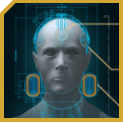
PPDC Example of the Pons.
Named after the Latin word for "bridge", the Pons is a revolutionary connection system that forges two brains into a singular consciousness. The initial design of the Pons was a skeletal helmet with circular clamps that fixed it to the head of the user.[14] Pons were later constructed within the interior of the helmets for Drivesuits to work in tandem with the entirety of the Drift process inside the Jaeger.
When connected through the Drift, pilots are able to "see" what the Jaeger does through the Pons interface; it allows them to pick up telemetry from whatever sensors are in the direction the pilot looks.[15]
Prior to the Double Event, K-Scientist Newton Geiszler created a makeshift Pons system from garbage and equipment from the K-Science Lab (such as the Miking Machine).[7] The untested Pons headset was proven functional when he successfully drifted with the damaged remains of Mutavore's brain.
Spinal Clamp[]

The Spinal Clamp
Spinal Clamps connect the spines of the two pilots together when attached to the Conn-Pod systems.[16] Spinal clamps are shown to be consistently active before placement and are stored in foam-lined containers. Spinal clamps connect the vertebra of the pilot's spinal cord to different sections of the Jaeger's spine.[17]
Relay Gel[]

Relay Gel.
Relay Gel (or Data Relay Gel[7]) resides within the helmet of the Jaeger pilot and relays the electrical impulses of the pilots to one another, allowing them to move in synchronicity.[16] Data transmitted from the helmets disperses the Relay Gel into the circuitry suit.[7][note 2]
Neural Handshake[]
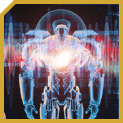
PPDC Exmaple of the Neural Handshake.
The Neural Handshake is the final process of the Drift and a bind that enables the two pilots' minds to manipulate their Jaeger's every movement. This connection is achieved within the Jaeger once the pilots' suits have been locked into the motion rig.
The handshake is initiated and monitored by PPDC's J-Chief LOCCENT Officer, such as Tendo Choi. The Neural Handshake allows man to become machine. Only after a stable Drift connection is established can the pilots activate the final phase.[14]
Neural Spike[]

The Neural Spike.
The Neural Spike is an invasive auxiliary device used to interface with the brain directly. The spike penetrates the brain directly to establish a connection with the Pons System. The Neural Spike is used on the Baby Kaiju's secondary brain in order to obtain information regarding the breach.[7]
Development[]
Early concepts for the Drift attempted to represent the characters within a headspace similar to that presented in Pacific Rim: Tales From Year Zero with Caitlin Lightcap and Sergio D'Onofrio.[2][18] One concept pitched by Industrial Light and Magic was the use of a heads-up-display and intercom system.[18] Another idea was to represent characters as non-corporeal forms that could walk through solid objects in the memories of a person chasing the R.A.B.I.T.[18]
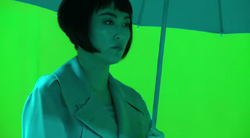
Rinko Kikuchi filming the sequence for Mako and Raleigh's first Drift.
Guillermo del Toro was not interested in dedicating days to filming an entire sequence for the Drift built around the ideas suggested, but instead pitched the idea of the pilots connecting through memories. During the filming of the Drift sequences, sets were lit with gray and blue lighting. The actor's props and costumes were treated gray paint to capture the effect desired by Guillermo del Toro, who filmed the Drift scenes in black and white.[18]
Make-up artist, Jordan Samuel, treated actors like Rinko Kikuchi black and grayscale make-up to work in line with del Toro's vision. del Toro also used lighting strikes to give the characters skin a blue and bleached or washed out appearance. Drift Sequences were shot separately from left to right, and edited together in post-production so that they blended together, moving from foreground to background.[18]
For the beginning of Mako's memory of the Onibaba attack in Tokyo, del Toro worked with chief lighting technician David Lee and cinematographer, Guillermo Navarro, to create an on-set transition instead of using CGI. Lightning in the Conn-Pod was rigged to fade on cue as Kikuchi stepped forward on a platform (designed to look like a street) situated in front of her rig as simulated ash was blown into the set.[18]
Trivia[]
- According to Raleigh Becket, Caitlin Lightcap's Drift technology is based on DARPA's Jet-fighter Neural-Interface project.[19][20][7]
- During the earliest tenure of the Defense Corps, recruiters would use the Xbox and basic questionnaires to determine Drift compatibility.[21]
- During a Q&A session at a Florida convention, Burn Gorman says that the back of the Pons headset would send electrical shocks down his and Charlie Day's necks whenever they were wearing it.[22][note 3]
Gallery[]
Tales From Year Zero[]
Promotional[]
Screenshots[]
Behind the Scenes[]
Concept Art[]
Notes[]
- ↑ del Toro: "Raleigh’s character has three stages that are very very simple. In the first fight he loses a partner. He’s just like, I’m not gonna partner anymore, I’m not gonna be responsible for someone else. Then he discovers Mako, who has an even more tragic story than his. And he gains a partner. And finally he completes the circle at the end of the movie when he saves that partner. So he was unable to save his brother, but now he is saving him. He saves Mako. He becomes the dominant pilot. All the dominant pilots in the Jaeger are on the right hand side. In the fight that Mako is now in his place, so he saves himself. That completed the circle. I wanted to show a circle that needed to be completed."
- ↑ Gipsy Danger A.I.: "Data on helmet. Data Relay Gel dispersing in circuity suit."
- ↑ Gorman: “We had these helmets that we had to put on, and they were wired in a strange way. And they were kind of, sparking a little bit. And I remember thinking, “that’s definitely an electric shock”. I said to Charlie, “Did you get that, like...?” and he's like, “Yeah, I’ve been getting that all day!" These things are like electric and we’re getting shocked.”
References[]
- ↑ 2.0 2.1 2.2 2.3 2.4 Pacific Rim: Tales From Year Zero
- ↑ 3.0 3.1 Pacific Rim Official Featurette - The Drift
- ↑ Mind-meld brain power is best for steering spaceships
- ↑ Pacific Rim: DVD Commentary, Behind the Scenes with Guillermo del Toro
- ↑ Travis Beacham: "Chasing the Rabit"
- ↑ 7.0 7.1 7.2 7.3 7.4 7.5 7.6 7.7 Pacific Rim
- ↑ 8.0 8.1 Travis Beacham: Is Drift Compatibility a "chicken/egg" situation?
- ↑ Drifting Lexicon
- ↑ PACIFIC RIM Lexicon Entry #2: Headspace
- ↑ Travis Beacham: Why do Pilots talk during the Drift?
- ↑ PACIFIC RIM Lexicon Entry #1: Ghost-Drifting
- ↑ Travis Beacham: Drifting and Personalities
- ↑ 14.0 14.1 Pan Pacific Defense Corps: Drive Suit Room
- ↑ Travis Beacham: How do pilots see in a Jaeger?
- ↑ 16.0 16.1 Guillermo del Toro Provides PACIFIC RIM Trailer Commentary Revealing Character Backstory, Details for the Jaegers and Kaiju and Much More
- ↑ Pacific Rim: A History of Jeagers
- ↑ 18.0 18.1 18.2 18.3 18.4 18.5 Pacific Rim: Inside the Drift Featurette
- ↑ RELIABLE NEURAL-INTERFACE TECHNOLOGY (RE-NET)
- ↑ EL TORO DISCUSSES THE ORIGINS OF THE “JAEGER” FROM PACIFIC RIM
- ↑ Travis Beacham: Early Drift tests
- ↑ Burn Gorman Q&A Pensacon Part 3
- ↑ Prop Spotlight – Pacific Rim
| |||||||||||||||||||||||
| |||||||||||||||||




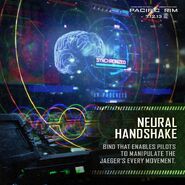


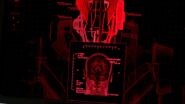

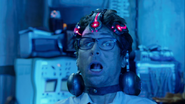

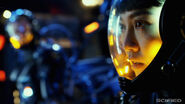

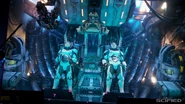

![Pons BTS-01.jpg (290 KB) Close-up of Newton's "Pons headset".[23]](https://static.wikia.nocookie.net/pacificrim/images/8/84/Pons_BTS-01.jpg/revision/latest/scale-to-width-down/185?cb=20140703062257)




